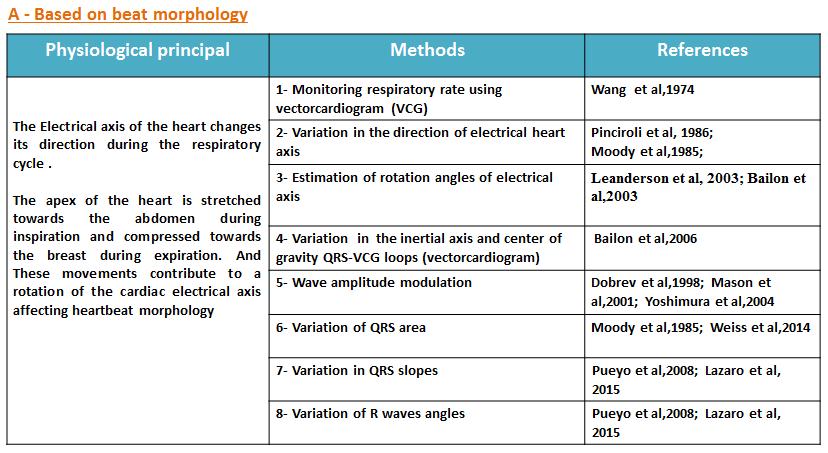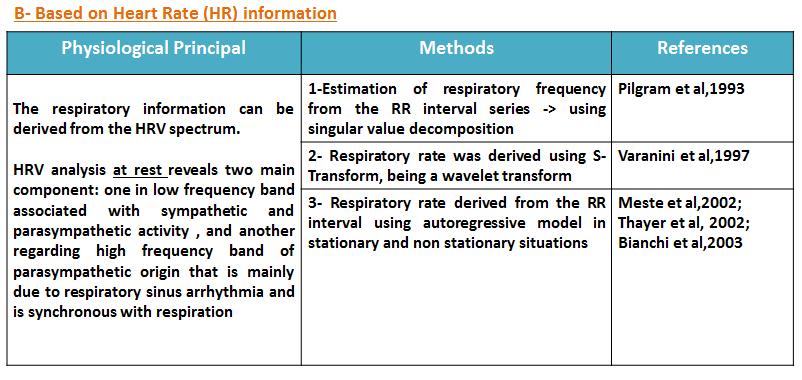Motivations
The interest in estimating the ventilation from an electrocardiogram(ECG), instead of a direct respiration measurement that involves uncomfortable and expensive equipment is evident in the current study. Not only because the ECG is easily accessed via the body sensors, but the derived ventilation and respiration rate (RR) information could be complementary to existing signals such as the acceleration and the HR in estimating the EE given the patient specificity and identified activity type.
EDR principles and methods
Although the ultimate goal is to obtain relaible estimates of the ventilation signal (intake and out take volumes) during moderate physical activities, we started by presenting a general review on a closely-related subject, i.e., deriving the respiration rate (RR) from the ECG signal since few work has been done so far in the field of ventilation estimation while the underlying physiological principles are identical [Omid Sayadi and Eric H. Weiss 2014].
The following recapitulates the three main directions in RR estimation using sing/multiple leads ECG.
The following is an example of the EDR signal (from R-wave modulation of a single-lead ECG signal) as compared with the respiration signal measured by a pneumatic transducer. Note that no interpolation or filtering is conducted on the EDR signal obtained instantaneously at each R-wave detection, and a mis-detection has also occured (upper trace). The variation of QRS area together with the slope and/or the R-wave angles should yield even more robust estimates of the ventilation signal.



